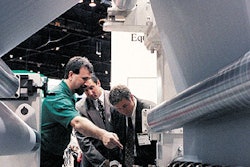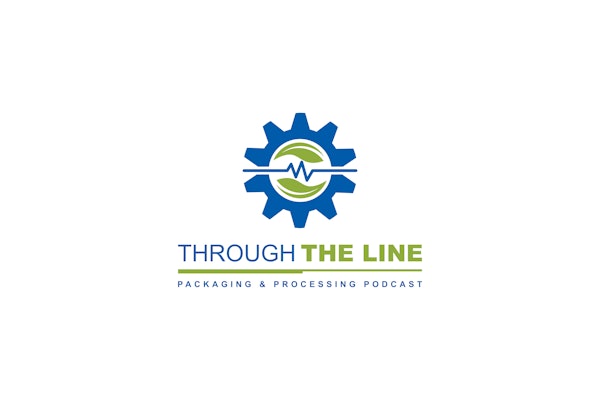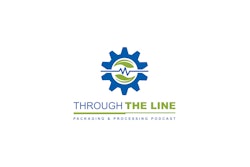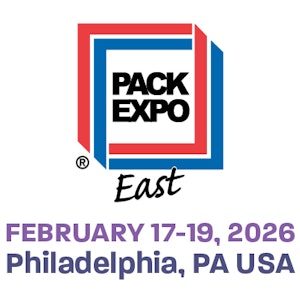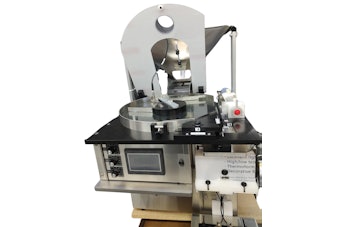That's according to Dr. Ken Ryan, director of the Center for Automation in Motion Control at Alexandria Technical College in Alexandria, MN. Ryan was recently interviewed by Ontheedgeblog.com blogger Keith Campbell. Also interviewed by Campbell was Shane Loughlin, president of SL Controls. Ryan and Loughlin were in Ireland at the time of the interview, investigating the healthcare packaging-related application that leverages automation standards to integrate best-of-breed equipment.
The information in this article is excerpted from this recent interview. Listen to the complete podcast.
Campbell: What sort of standards are you finding, Ken?
Ryan: We at Alexandria Technical College through the Center for Automation in Motion Control have had a long history of working to uncover what would be good automation standards, primarily for the packaging industry. One of the reasons I'm here with Shane Loughlin is that Shane and I have had a long relationship brought on in part by our work together with OMAC in the late 90s and early part of this decade. It became evident early on that Shane had a real handle on application of automation standards like S-88, S-99 and IE611-31 to automated manufacturing processes. So we're here to observe examples of application of automation standards in a real-world pharmaceutical/medical device application here in Ireland.
Loughlin: The application is in the biomedical industry, but I prefer not to [name the end-user firm]. It consists of two high-speed assembly machines, followed by a flow wrapper plus a case packer. There is a lot of integrated robotics and integrated vision. In the real world, I think you would marry all the major automation vendors in different formats on the various machines.
Campbell: You're echoing exactly some of the thoughts that I've written for my blog this month, where I talk about if manufacturing in America is going to be successful, we need to find simpler ways of implementing good automation and integration. Can you tell us a little more of your thoughts on that and how that ties into what you're seeing in this application.
Ryan: There is a two-pronged answer to that. Number one is I'm really excited about the power that is coming into automation. I think for a lot of us, we've always focused on the complexity that automation is bringing to the manufacturing environment, and I think it's that very complexity that is actually going to benefit us in the long run in terms of its ability to work hard, and to take over the processes that we're asking it to automate. But what has to happen is that that technology has to be applied in an intelligent way. One of the things that I've seen here in my visit to Ireland and working with the folks at SL Controls is that it's very doable. With intelligent automation, you make the technology do your work instead of you doing it for the technology.
The other thing, as we look at this complexity in terms of the controllers, the networks, the Human-Machine Interfaces, the robotics, the vision system, and the need for technicians to understand a very high level of technology, there is no way that we can expect that level of expertise to exist in all the manufacturing facilities that are going to be utilizing this automation. So the technology that we put in place has to be more intelligent, and until we get to the point where the technology is solving its own problems, or at least giving us the information we need to easily solve those problems, I think one of the things we'll have to do is look at remote access to those machines.
And one of the things I've seen here that SL Controls has implemented is this idea of having access to those machines based on the S-99 standards and implementation of the electronic signature. I think that we see these issues are critical, and not only to the pharmaceutical and biomedical environment.
Leaders learn from the past while looking to the future—and bring both to bear on the here and now. This is the philosophy that has steered Keith Campbell's 30+ years in manufacturing. It has worked for him in operations, maintenance, engineering, R&D, education, consulting and professional organizations—and now he's putting it to work for you—taking you to the edge of his thoughts on packaging operations.
The information in this article is excerpted from this recent interview. Listen to the complete podcast.
Campbell: What sort of standards are you finding, Ken?
Ryan: We at Alexandria Technical College through the Center for Automation in Motion Control have had a long history of working to uncover what would be good automation standards, primarily for the packaging industry. One of the reasons I'm here with Shane Loughlin is that Shane and I have had a long relationship brought on in part by our work together with OMAC in the late 90s and early part of this decade. It became evident early on that Shane had a real handle on application of automation standards like S-88, S-99 and IE611-31 to automated manufacturing processes. So we're here to observe examples of application of automation standards in a real-world pharmaceutical/medical device application here in Ireland.
Loughlin: The application is in the biomedical industry, but I prefer not to [name the end-user firm]. It consists of two high-speed assembly machines, followed by a flow wrapper plus a case packer. There is a lot of integrated robotics and integrated vision. In the real world, I think you would marry all the major automation vendors in different formats on the various machines.
Campbell: You're echoing exactly some of the thoughts that I've written for my blog this month, where I talk about if manufacturing in America is going to be successful, we need to find simpler ways of implementing good automation and integration. Can you tell us a little more of your thoughts on that and how that ties into what you're seeing in this application.
Ryan: There is a two-pronged answer to that. Number one is I'm really excited about the power that is coming into automation. I think for a lot of us, we've always focused on the complexity that automation is bringing to the manufacturing environment, and I think it's that very complexity that is actually going to benefit us in the long run in terms of its ability to work hard, and to take over the processes that we're asking it to automate. But what has to happen is that that technology has to be applied in an intelligent way. One of the things that I've seen here in my visit to Ireland and working with the folks at SL Controls is that it's very doable. With intelligent automation, you make the technology do your work instead of you doing it for the technology.
The other thing, as we look at this complexity in terms of the controllers, the networks, the Human-Machine Interfaces, the robotics, the vision system, and the need for technicians to understand a very high level of technology, there is no way that we can expect that level of expertise to exist in all the manufacturing facilities that are going to be utilizing this automation. So the technology that we put in place has to be more intelligent, and until we get to the point where the technology is solving its own problems, or at least giving us the information we need to easily solve those problems, I think one of the things we'll have to do is look at remote access to those machines.
And one of the things I've seen here that SL Controls has implemented is this idea of having access to those machines based on the S-99 standards and implementation of the electronic signature. I think that we see these issues are critical, and not only to the pharmaceutical and biomedical environment.
Leaders learn from the past while looking to the future—and bring both to bear on the here and now. This is the philosophy that has steered Keith Campbell's 30+ years in manufacturing. It has worked for him in operations, maintenance, engineering, R&D, education, consulting and professional organizations—and now he's putting it to work for you—taking you to the edge of his thoughts on packaging operations.



